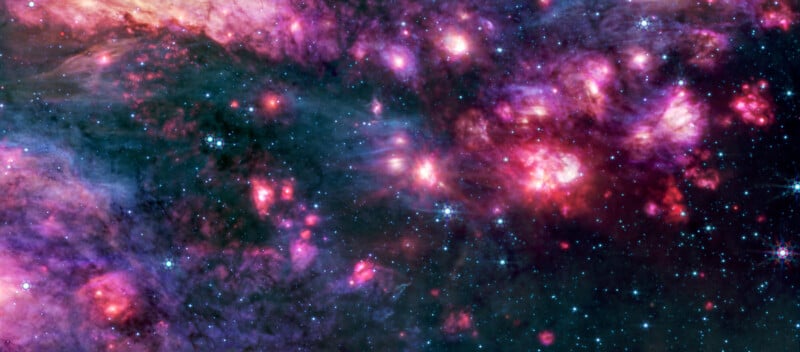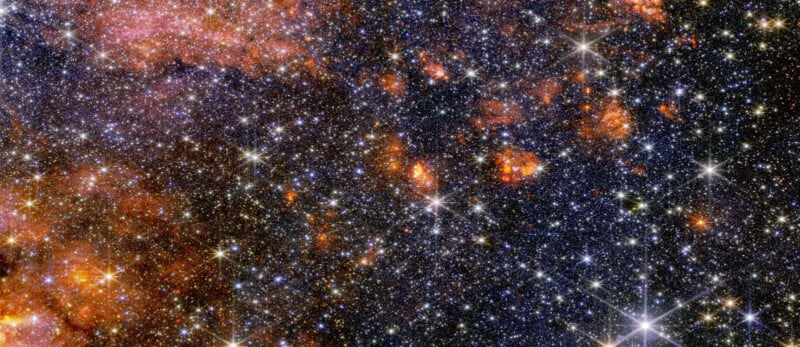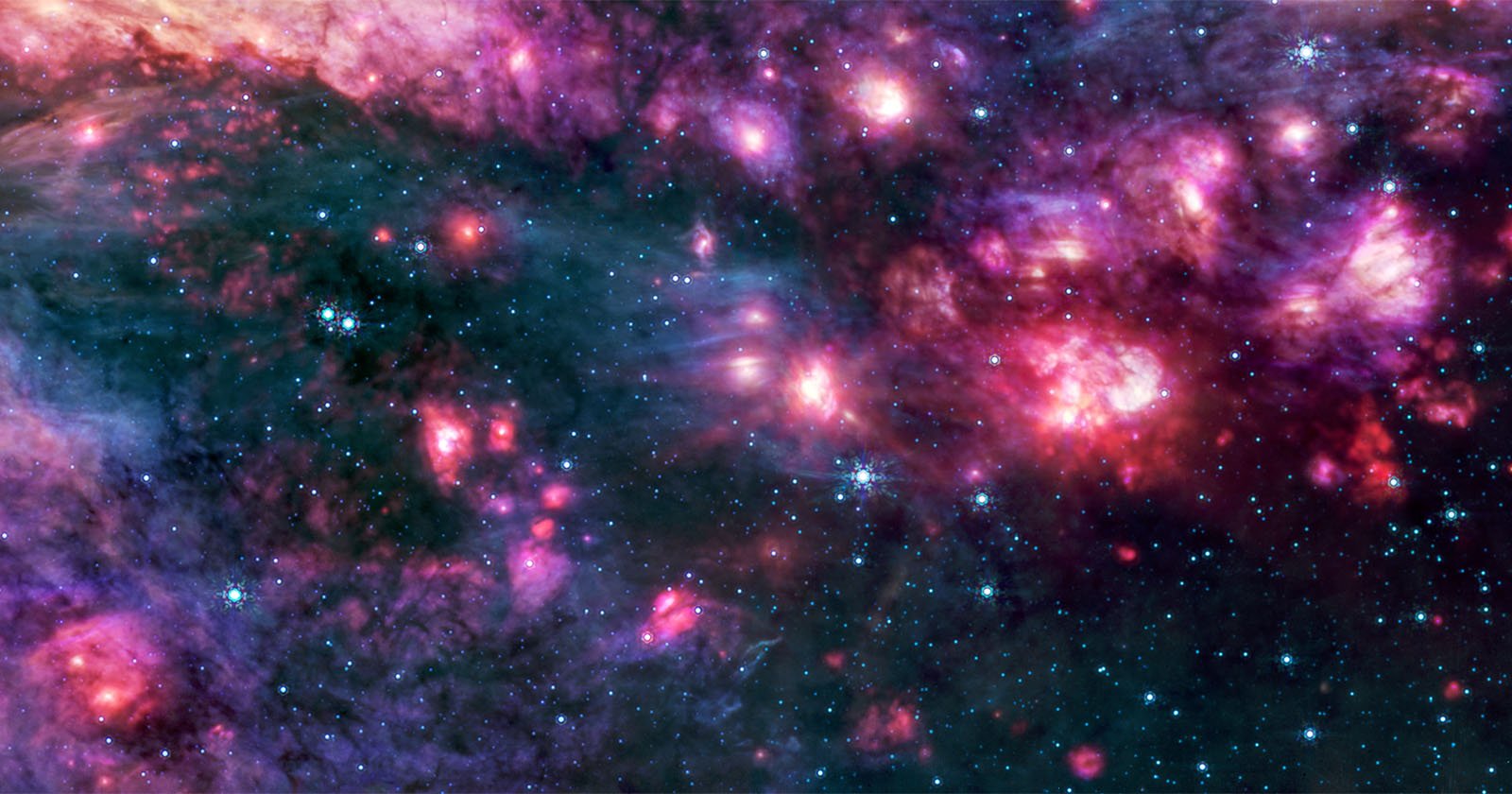 Sagittarius B2 (MIRI image)
Sagittarius B2 (MIRI image)
The NASA/ESA/CSA James Webb Space Telescope’s (JWST) latest images reveal a colorful array of stars in the relatively nearby Sagittarius B2 molecular cloud, the most active and massive star-forming region in the Milky Way galaxy.
Sagittarius B2, also known as Sgr B2, is responsible for half the stars in the Milky Way galaxy’s galactic center, even though it only comprises about 10% of the region’s fuel for star formation. Given Sgr B2’s propensity for making stars, it is a truly stellar subject for Webb’s near-infrared (NIRCam) and mid-infrared (MIRI) cameras. Thanks to Webb’s remarkable resolution and sensitivity, it captured Sagittarius B2 in unprecedented detail.
The Milky Way galaxy is vast, so even though Sgr B2 is relatively close to Earth on the cosmic scale, it is still approximately 27,000 light-years away. Sgr B2 is located within a few hundred light-years from Sagittarius A*, the supermassive black hole at the center of the Milky Way. Scientists have imaged this black hole, too, and physicists used Webb to get the most detailed image ever of the black hole earlier this year.
 Sagittarius B2 (NIRCam image)
Sagittarius B2 (NIRCam image)
Using NIRCam, it’s possible to peer through the cosmic gas and dust that obscures the view for most cameras, like the visible light ones aboard the Hubble Space Telescope. By looking through the dust that surrounds new stars and star-forming regions, it’s possible to see baby stars and learn much more about how they form and grow. Scientists believe Webb’s data will help unravel key mysteries surrounding stellar formation, which remains a challenging topic to understand. Scientists also want to determine why Sagittarius B2, despite its relatively small size, has such immense levels of star formation compared to its neighbors in the Milky Way’s galactic center.
However, ironically, the darkest regions of Webb’s new images are perhaps the most interesting. They are not truly dark, but rather, the cosmic dust is so thick here that not even Webb’s incredible cameras can see through to the other side. These dark areas are the most densely packed in terms of stellar material. These opaque clouds contain the raw material required for more stars to be born and protect baby stars that are not yet bright enough to shine through.
Image credits: NASA, ESA, CSA, STScI, A. Ginsburg (University of Florida), N. Budaiev (University of Florida), T. Yoo (University of Florida). Image processing: A. Pagan (STScI)
